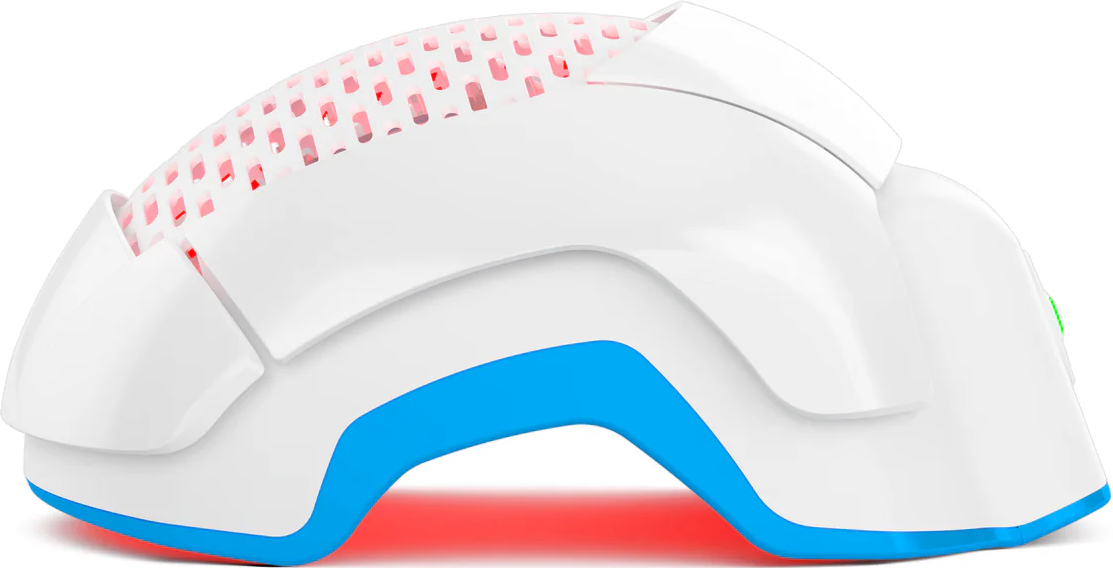Ever leaned close to the mirror and spotted what looks like two hairs sprouting from the same pore? Maybe you plucked it once—out of sheer curiosity—and wondered if your follicles were… multiplying. That peculiar little phenomenon has a name: Pili Multigemini.
In medical terms, this is when a single follicular opening produces multiple hair shafts, usually two but sometimes three or more. It’s far more common than most people realize, yet still considered rare in formal dermatology literature. And here’s the part that surprises people—it’s almost always harmless, just a fascinating quirk of how your hair follicles grow.
In this guide, we’ll break down the why, the how, and the should I be worried?
What Exactly Is Pili Multigemini?
Pili multigemini is the technical name for a follicle that produces more than one hair shaft from the same opening. In simpler language, it’s that “two hairs one follicle” scenario you might catch in the mirror—except it’s not just limited to pairs. Some rare cases involve three or even four individual hairs sharing a single follicular canal.
Under the surface, each of these shafts has its own tiny hair matrix and papilla, all bundled together like roommates crammed into one apartment. Trichoscopy and histopathology studies confirm that although these hairs exit as a cluster, they develop as separate hair units encased in a single outer root sheath.
It’s seen most often on men’s beards and scalps, though women can have it too—frequently unnoticed unless they examine their hairline closely. Reported prevalence is low (around 2% in small clinical surveys), but experts suspect under‑diagnosis because it’s usually asymptomatic.
Worth noting: having multiple hairs in one follicle does not automatically signal disease or hair loss. In fact, dermatologists classify it as a benign variation in hair growth patterns.
So yes, your follicle might simply be showing off. Or, if you prefer the scientific explanation, it’s the product of follicular duplication or papilla bifurcation, sometimes linked—though not conclusively—to minor trauma or genetics.
And humans rarely notice it unless they shave closely, magnify their skin, or become hyper‑aware of small hair oddities.
What Does Pili Multigemini Look Like?
At first glance, it can seem almost like a thicker hair or a stray double shaft poking out of your skin. But look closer—ideally with a magnifying mirror or under trichoscopy—and you’ll see two (or more) individual hairs exiting one opening. They may emerge at slightly different angles, or one might appear shorter or fuzzier, giving an uneven tufted look.
Dermatologists sometimes describe the visual as a “tiny sprout bundle.” Under a dermatoscope, the picture is even clearer: each hair has its own cuticle and medulla, all wrapped together in a single outer sheath.
Clusters can appear on the scalp, beard, nape of the neck, or limbs, though the beard area is the classic site. Most commonly, it’s two hairs per follicle, but reports of three or even four shafts are documented in case studies.
To the touch, these spots feel no different from normal follicles—unless inflammation or ingrown hairs occur, which is rare. People usually stumble upon it while grooming, shaving, or… absentmindedly examining their skin.
It’s easy to mistake pili multigemini for ingrown hairs or mini‑follicle clusters, but a professional trichologist can distinguish them in seconds under magnification.
Why Does Pili Multigemini Occur?
This is where things get oddly fascinating. Pili multigemini doesn’t just appear out of nowhere, though we don’t yet have a single, carved‑in‑stone explanation. Dermatology literature points to a few leading theories, and each offers a slightly different peek into how hair follicles behave.
The most accepted idea is follicular papilla bifurcation. Imagine the hair papilla—the little bulb at the root where hair cells are generated—splitting in two like a budding plant. Each segment then produces its own shaft, but they remain bundled in the same outer follicle sheath. It’s like two siblings forced to share the same bedroom.
Another hypothesis involves embryonic follicle germs that never fully faded after birth. These dormant clusters can wake up later, re‑forming secondary hair shafts in an already‑established follicle. Dermatologists also note occasional post‑traumatic or mechanical triggers—shaving irritation, follicle injury, or even post‑hair‑transplant scenarios have sometimes coincided with the emergence of multi‑shaft follicles.
Genetics might play a part, but the evidence is patchy. No single gene or family study has conclusively linked heredity to this condition. Case reports and small trichoscopic surveys hint that it may simply be a benign quirk of follicular development.
Interestingly, researchers using scanning electron microscopy (SEM) confirm that each hair in a pili multigemini cluster has its own cuticle and medulla, so these aren’t “split hairs” in the cosmetic sense. They are fully formed individual hairs, just… roommates under one roof.
If we zoom out:
- Primary drivers: papilla bifurcation or merging of papillae
- Possible triggers: trauma, irritation, folliculitis history
- Speculative factors: embryonic germ activation, maybe minor genetic influence
And most of us wouldn’t even notice these follicles without close inspection. The science is clear on one point—they are rarely dangerous. The “why” remains half‑solved, which is part of why dermatologists find these cases intriguing.
Is Pili Multigemini Harmful?
Here’s the good news first: pili multigemini is overwhelmingly benign. If you’ve just spotted a tuft of two hairs in one follicle, it’s probably nothing to lose sleep over.
Dermatology case reports consistently show that multi‑hair follicles do not automatically lead to hair loss, bald patches, or systemic health issues. In fact, for most people, the follicles function like any other—they just produce more than one shaft.
That said, there are a few minor caveats:
-
Folliculitis risk: Occasionally, clustered shafts can trap oil or bacteria more easily, leading to mild irritation or ingrown hairs—particularly in shaving zones like beards and napes.
-
Cosmetic impact: Some people simply don’t like the uneven appearance or texture. It can feel rougher under fingertips, especially if one hair grows thicker than the other.
-
Rare inflammation: In very infrequent cases, repeated irritation can spark localized redness or bumps.
What pili multigemini doesn’t do:
- It won’t trigger baldness
- It doesn’t spread like an infection
- It carries no cancer risk
For most, the “harm” is purely visual. A trichologist might suggest minor cosmetic tweaks or reassurance rather than medical intervention. In other words, it’s a hair quirk—not a warning sign.
How Is Pili Multigemini Diagnosed?
Diagnosis is surprisingly straightforward once you know what to look for. Dermatologists or trichologists typically start with a visual exam, often aided by trichoscopy or dermoscopy—essentially, magnified scalp cameras that reveal follicular openings in crisp detail.
On dermoscopy, a multi‑hair follicle appears as two or more shafts sharing a single ostium, usually of different lengths or textures. Each shaft is distinct, confirming that this isn’t a split hair.
A biopsy or scanning electron microscopy (SEM) is rarely needed but can definitively show each hair with its own cuticle and medulla wrapped in a shared sheath.
Diagnosis at home is tricky. Without magnification, it’s easy to confuse pili multigemini with ingrown hairs, clogged pores, or casual hair tufts. That’s why professional evaluation is recommended if you’re worried or if irritation appears.
As a quick rule of thumb:
-
Multiple hairs, one follicle, no pain? Likely benign multigemini.
-
Redness, swelling, discomfort? Possible folliculitis—worth a checkup.
Professionals can also guide on whether treatment (like laser hair removal) is even necessary or if reassurance alone will do the job.
Treatment and Management Options
Here’s the part most people immediately jump to: Do I need to treat this? The short answer—usually not. Pili multigemini is almost always harmless and cosmetic, so treatment is optional and depends on whether it bothers you. Still, for the curious (or the self‑conscious), here’s how professionals handle it.
1. No Intervention (the “Do Nothing” plan)
Most dermatologists or trichologists will simply reassure you. Multi‑hair follicles rarely cause medical problems. If you’re comfortable ignoring it, you can.
2. Cosmetic Solutions
For people who dislike the visual effect or experience mild irritation:
-
Laser Hair Removal (LHR): Studies and case reports show Nd:YAG or diode lasers can selectively reduce multi‑hair follicle clusters and even calm recurring folliculitis.
-
Electrolysis: A slower but permanent option, historically effective for isolated tufts.
3. Symptom Management
If folliculitis or ingrown hairs occur, dermatologists might recommend:
- Gentle exfoliation or anti‑bacterial washes
- Occasional topical treatments for inflammation
4. Plucking or Shaving?
Tweezing won’t make it worse. Shaving doesn’t cause multigemini either, though shaving closely can highlight the appearance of dual hairs.
5. Laser Phototherapy (LPT) Considerations
Since LPT uses cool, non‑damaging light to support scalp health, it does not harm or multiply multi‑hair follicles.
Look: treatment is optional and cosmetic. Only if there’s discomfort, frequent irritation, or aesthetic concern should intervention be considered. Otherwise, embrace your follicles—they’re biologically normal.
Common Myths About Pili Multigemini
Myth 1: Shaving causes multiple hairs in one follicle.
False. Multigemini arises from internal follicular structures, not from surface grooming habits.
Myth 2: It’s a sign of balding.
Also false. There’s no direct link between pili multigemini and androgenetic alopecia.
Myth 3: Multi‑hair follicles are dangerous or cancerous.
No. Peer‑reviewed literature and trichology consensus confirm that it’s a benign variation, not a malignancy.
Most myths stem from the simple surprise of noticing two hairs in one follicle for the first time. The condition is primarily cosmetic and rarely symptomatic.
Expert Advice and When to Seek Help
So, when should you actually see a professional? Three main scenarios:
1. Persistent Irritation or Folliculitis
If multi‑hair follicles repeatedly become inflamed or infected, a dermatologist can recommend laser therapy or topical care.
2. Cosmetic Distress
For individuals bothered by clusters in visible areas (beards, hairlines), professional removal options like electrolysis or laser can offer relief.
3. Diagnostic Uncertainty
If you’re unsure whether it’s multigemini, ingrown hairs, or something else entirely, a trichology exam clears doubts quickly.
Experts emphasize that reassurance is often the best “treatment.” For most, multigemini is simply an anatomical curiosity. If you’re ever in doubt, a brief dermatoscopic evaluation is both safe and definitive.
Conclusion
Pili multigemini might look unusual, but it’s really just a benign follicular twist of nature. Most cases are asymptomatic, require no treatment, and can be left alone without worry.
If you notice multiple hairs in one follicle, don’t panic—it doesn’t mean hair loss, disease, or danger. Myths linking it to cancer, infection, or grooming habits are unfounded. Treatments like laser hair removal, electrolysis, or gentle scalp care are optional and primarily cosmetic.
From a trichologist’s perspective, this is one of those fascinating quirks of human hair biology—visible only to the curious eye or under magnification. Whether you choose to treat it or simply accept it, the takeaway is clear: your scalp is fine.
So next time you spot two (or three) little hairs sprouting together, you’ll know exactly what’s going on… and why it’s really nothing to fear.






















